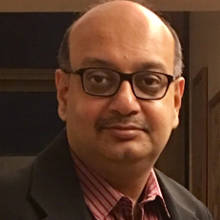By Indrajit Gupta and Anmol Shrivastava
India’s AAIB released its 15-page preliminary report on the tragic Air India 787 Dreamliner crash in Ahmedabad, shortly after midnight today.

Crash summary
- Fuel switches on both engines moved from “RUN” to “CUTOFF” 3 seconds after liftoff, starving the engines of fuel.
- Pilots turned them back on after 10 seconds—but it was too late. The aircraft couldn’t climb and crashed into a medical hostel.

Cockpit confusion
- Cockpit voice reorder (CVR) audio captured one pilot asking, “Why did you cut off the fuel?”
- The other pilot denied it.
- The switches require manual lifting of an interlock latch, making accidental movement unlikely.

The big question: Why did the switches move?
This is now the heart of the investigation. These switches aren’t easy to move by mistake. So what happened?

Theory 1: Design or mechanical flaw
- On December 17, 2018, the FAA issued a Special Airworthiness Information Bulletin (SAIB) after reports that fuel control switch locks on some 737s were disengaged.
- The 787 was also covered in the advisory.
- But: It was non-mandatory. No Airworthiness Directive (AD) was issued.
- The AAIB confirms: Air India didn’t inspect the locking mechanisms on this aircraft.
If the final report pins the root cause on this issue, accountability may shift from crew error to design flaw.
Four tough questions arise:
- Why didn’t Air India act on the SAIB in keeping with a safety first philosophy?
- Why didn’t the FAA issue a mandatory directive?
- Should Boeing have redesigned the switch entirely?
- Why has the AAIB refrained from recommending any action to Boeing or GE?
“We shouldn't have to expect pilots to compensate for flawed designs.” — Capt. Chesley “Sully” Sullenberger

Theory 2: Pilot error
Why it’s considered:
- Rare human lapses do occur.
- Possible “muscle memory” from past aircraft or simulators.
Why it’s challenged:
- Fuel switches need 4-step motion to activate.
- Both engines shut down within 1 second of each other—suggesting improbability of simultaneous pilot error.
Deeper CVR mic analysis could offer clarity.

Theory 3: Deliberate action
Why it’s considered:
- The switches were manually turned off.
- Past cases of pilot suicide exist (Examples: here, here and here)
Why it’s challenged:
- Pilots sounded perplexed, attempted recovery.
- No cockpit struggle or nosedive.
- Impact angle was nose-up—not consistent with deliberate crash patterns.
Pilot psychology and motive still need probing.

Theory 4: Software or electrical fault
A software malfunction or control system failure remains a remote but real possibility.
Investigators will now review sensor data, full authority digital engine control (FADEC) behaviour, and cockpit logic systems.

What’s next
The hard part begins. Investigators will:
- Reconstruct pilot state of mind
- Deep analysis of cockpit voice from all microphones
- Examine switch design, tolerances, interlock integrity
- Study the FAA’s SAIB logic, Boeing’s response and Air India compliance with advisories
- Scrutinize relevant subsystems
- Rule out software or systemic failure or other possibilities

The goal:
Find the root cause. Prevent a repeat.
Exclusive: Anuradha Sengupta interviews Founding Fuel authors on the Air India AI 171 crash investigation series
Watch the full episode: Anuradha SenGupta x Founding Fuel
On her YouTube show @anuradhasays
In case you missed our 3-part series:
Part 1 – AI171: The Investigation That Could Redefine Aviation Safety
Read time: 5 mins
Part 2 – How Experts Are Reconstructing the AI171 Tragedy
Read time: 18 mins
Part 3 – Unraveling AI171: The Search for What Really Went Wrong
Read time: 10 mins

What readers are saying
“A must-read. Nothing has helped process the AI171 tragedy more.”
— Ambica Naithani, Educationist
“The finest reporting I’ve read on this tragedy.”
— Vivek Singh, Master Coach
“Brilliant. No sensationalism. Just sharp, nuanced journalism.”
— TN Hari, Executive Chairman, STEER World
“Outstanding. I could relate to the accuracy.”
— Group Capt KTN Rao (Retd), IAF
“Journalism that rises to the occasion.”
— Anuradha SenGupta, Senior Journalist


